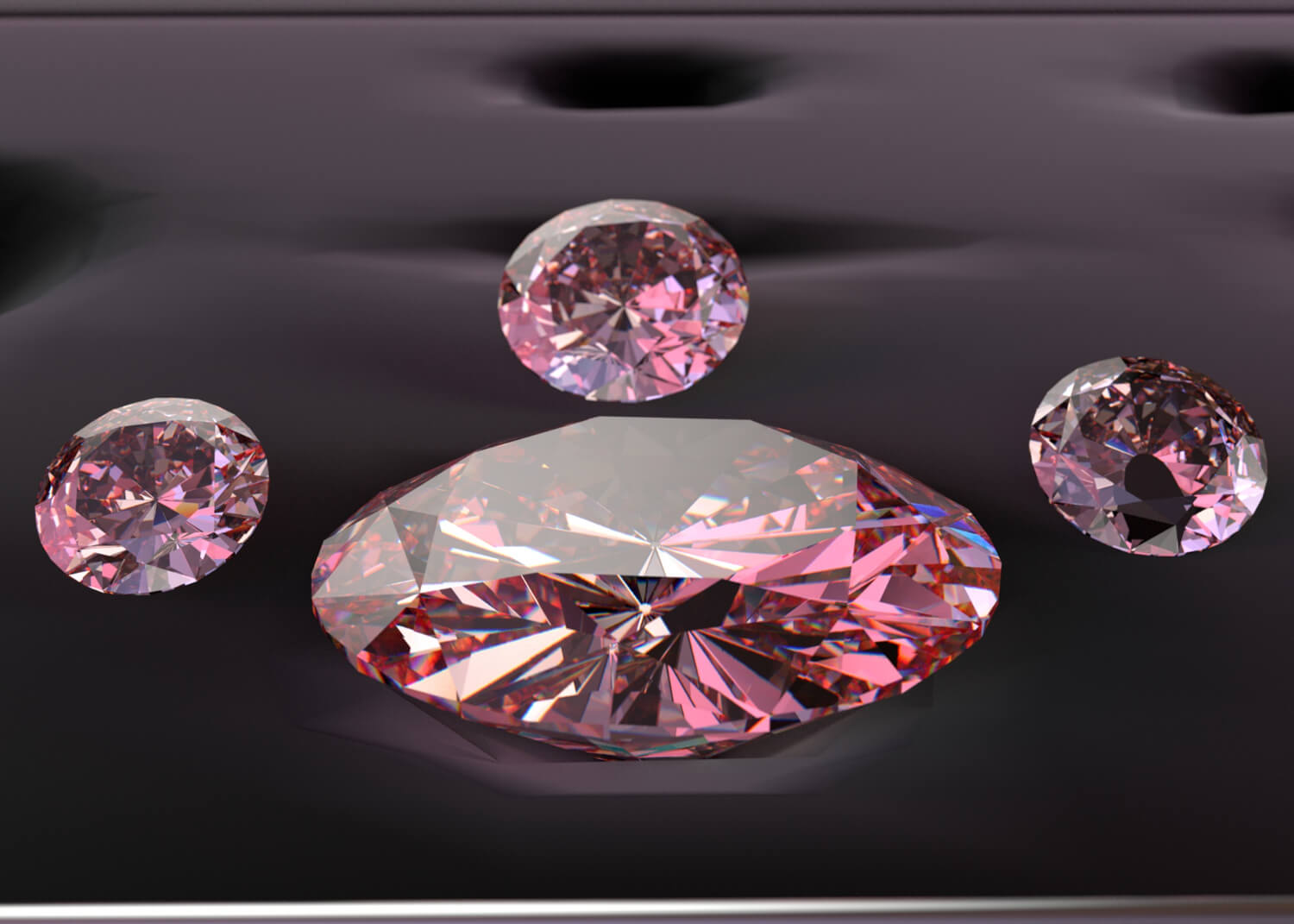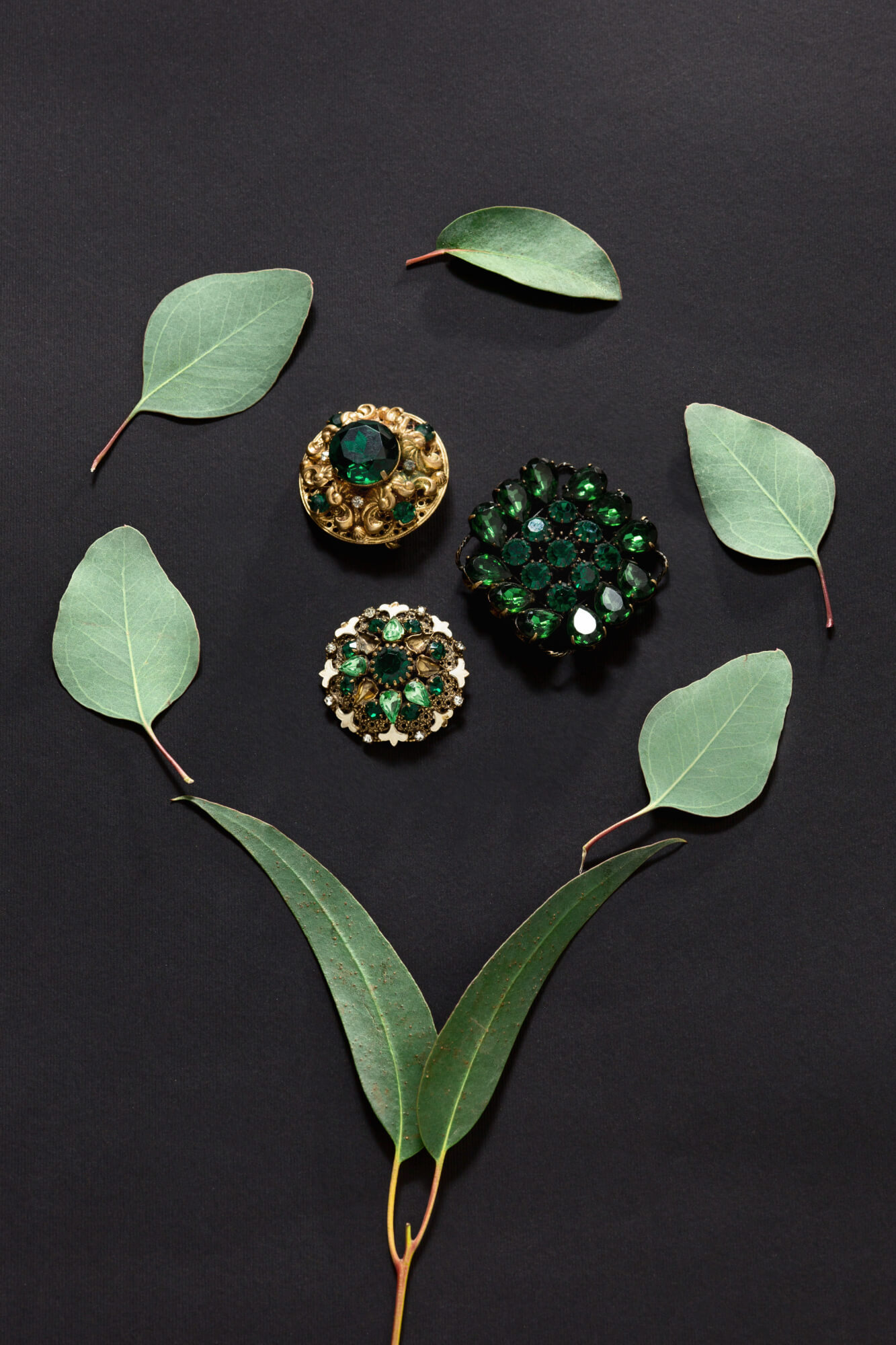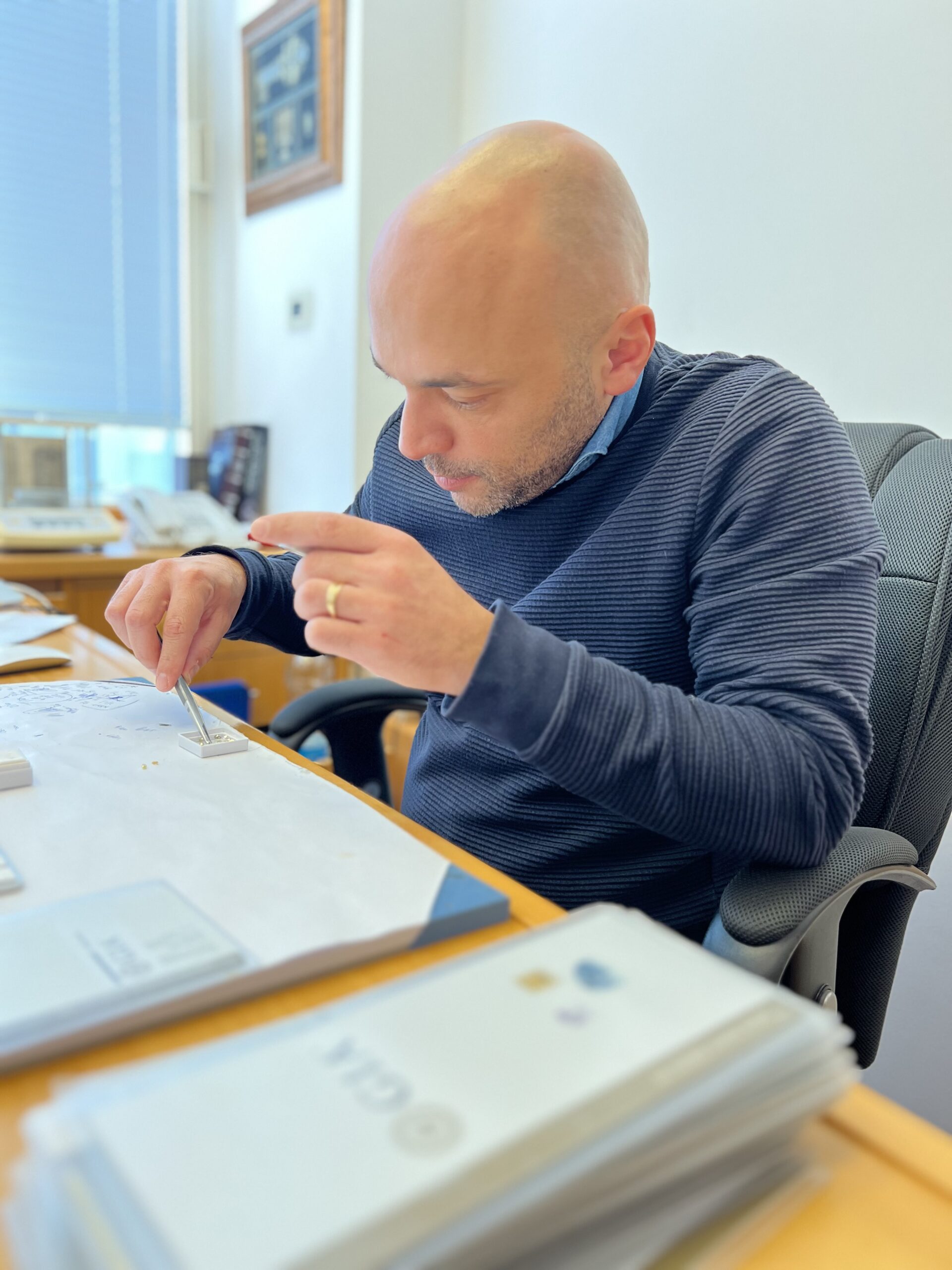GREEN DIAMOND
In this analysis, we will delve deep into the science behind the yellow diamond. Moreover, we will discuss all of the types, the culture and tradition significance, the comparison between yellow and colorless diamonds, investment, and many more. After reading this compilation of information, an individual will obtain pure knowledge, interesting facts, and tips that cannot be found in any other journal all over the internet.
In this article, we will tackle exciting topics such as the types of green diamonds available in the market, their wide shades from the lightest to the deep dark, what available shapes and cuts have, and many exciting pieces of knowledge that people could enjoy and learn from. Now, let’s start by understanding these natural green diamonds and where they can be found here on Earth.
What is a Green Diamond?
A natural green diamond is one of the Earth’s natural gemstones characterized by a green color. It is the sum of extraordinary events that occurred deep beneath our Earth’s mantle, together with extreme heat and pressure, some structural defects produced by radiation, and some foreign elements such as hydrogen, nitrogen, and nickel.
A colorless diamond’s formation is the same as the formation of a natural green diamond. The only difference is that the natural green diamond’s formation is altered by natural events such as the exposure of a diamond to radioactive elements like uranium and thorium. These elements change the diamond’s crystal structure, causing the diamond to absorb and deflect light, resulting in its green color. Unlike some other colored diamonds with chemical impurities, the color green is mainly caused by radiation.

Explore all types of green diamonds
The natural green diamond is considered one of the most sought-after pieces of jewelry due to its rarity, exclusivity, and natural appeal to high-value persons. It comes in a variety of shades and color intensities, and a reputable institute grades each shade to differentiate it from rare to rare. These shades are graded as Faint Green, Very Light Green, Light Green, Fancy Light Green, Fancy Intense Green, Fancy Dark Green, Fancy Deep Green, and Fancy Vivid Green.
Excluding the first three shades, we will analyze the difference between these Fancy grades of a green diamond.

Fancy Light Green
A fancy light green diamond has a more definitive green hue than the first three grades: faint, very light, and light green. It is the first fancy grade of a green diamond and is also the most inexpensive among the types of fancy green diamonds.

Fancy Green
It strikes a more solid green hue and a much more definitive color than a Fancy Light Green diamond. These diamonds are significantly rare and sought after by enthusiasts, and they are currently priced at $50,000 to $100,000 per one-carat weight, making them a viable investment option.

Fancy Intense Green
It has a deeper and richer hue of green, making it much more eye-catching than the lighter grades. Due to their striking appearance, these diamonds are perfect for a centerpiece in jewelry. They cost about $100,000 to $150,000 per one-carat.

Fancy Vivid Green
Due to its rarity, the estimated price of this type of diamond starts at $300,000 per one-carat weight. It is the second to the most intense shade of green diamond grades; anyone can compare its hue and saturation to a lush green forest. The largest fancy vivid green that was ever sold in auction was the Aurora Green; its carat weight is estimated at 5.1 carats.

Fancy Deep Green
This grade is the only known grade that has the deepest hue, saturation, and tone of a green diamond. Their deep and intense green hue, together with its remarkable rarity, investors and collectors often search for this grade of green diamonds to add to their collection or investment.

All Fancy
colored natural diamonds have their own allure, usage, and uniqueness. The intensity and distribution of a diamond's green color directly affect its grading when certifying it. A diamond's natural rarity combined with the saturation and tone of its color can increase its value, and the most collectible green diamonds are the ones with the purest shade.
Cultural Significance: Green Diamonds in Traditional and Modern Jewelry
There is no doubt that green diamonds are of great cultural importance to humankind. Historically, natural green diamonds were revered by people and used by high authorities such as kings, dukes, and, specifically, Pharaohs in Egypt, making them centerpieces for their crowns and accessories. The cultural significance of green diamonds transcends into today’s time due to their symbolism for growth, harmony, fertility, and vitality.
In the modern era nowadays, the green diamond’s significance is still celebrated by artists, famous celebrities, high-value individuals, and even people who use it to express their affection towards these chanting gems. It continues to captivate the hearts of its users’ personal preferences for fashion and luxury. Lastly, based on historical facts, it will continue to dominate the world of luxury due to its rising glamour for years.

Quality and grading of Green diamonds
Like crystal-clear colorless diamonds, green diamonds also share their quality and grading using a universal system that checks their cut, clarity, carat weight, and color. The quality of a diamond can be distinguished after checking its 4cs; the main difference between colorless and green diamonds is that they mainly differ through the checking of their color.
Checking the color of a diamond has three main criteria: hue, saturation, and tone. The hue mainly refers to the primary color of a diamond. A hue can be pure without any secondary colors or have a secondary color. Most of the green diamonds available have a secondary color ranging from yellowish-green to blue-green. While the saturation of a color is based on the intensity and dullness of a color, it represents the strongness of the color green in a diamond. Lastly, tone describes the color’s brightness and darkness; it means how much darkness and lightness a diamond has.
The other qualities of a diamond that need to be graded apart from color are the diamond’s cut, carat weight, and clarity. Cut refers to the actual shape of a diamond; a diamond is usually cut to enhance the gem’s color and brilliance, and cutters must always balance the preservation of the carat to make sure that it is not compromised when cutting a diamond. The clarity of a diamond refers to how many blemishes and inclusions a diamond has; the more inclusions and blemishes, the lesser its value. Lastly, the carat weight refers to the overall weight of a colored diamond; 1 carat is equivalent to 0.0002 kgs or 0.2 grams.
Green Diamond Cuts and Shapes
There are several cuts and shapes available when cutting a diamond. A diamond is usually cut and shaped to bring out the most brilliance and beauty. Some diamonds are cut to enhance their appeal and value to people, while some are cut to fit perfectly into a jewelry piece, making them a brilliant centerpiece. Understanding why diamonds are cut is essential when making them a focal point in jewelry.
To learn more about these cuts and shapes, one should know about the ten most popular available diamond cuts and shapes: round, princess cut, oval, marquise, pear-shaped, cushion cut, emerald cut, Asscher cut, radiant cut, and heart-shaped diamonds. In particular, green diamonds shine most when cut in a specific shape. When selecting the proper cut for a diamond, one should consider color saturation, size, proportion, and especially personal preference.
Here are some of the best cuts and shapes for the green diamond.

Emerald Cut
The most popular used cut for green diamonds. The emerald cut is a rectangular shape with trimmed corners, it is perfect for a green diamond due to its embossed attributes, making it spark brighter compared to any other cuts and shapes.

Oval Cut
The oval cut is a great option when it comes to maximizing the green diamond’s carat weight and emphasizing its color. The elongated shape of the oval cut tends to make the green diamond appear much larger than its actual size.

Radiant Cut
A radiant cut is a rectangular cut above and has a pointed tip below. This cut helps to create a more vibrant feel for green diamonds; it can enhance the color of the gem while providing natural brilliance, making it ideal for highlighting the green diamond.

Marquise Cut
This cut maximizes the perceived size of the green diamond. The way this shape resembles makes the green diamond’s color intensify. This cut is also perfect for rings due to its natural shape, which can elongate the finger of its wearer.
Comparing Green Diamonds to Colorless Diamonds
Colorless and green diamonds have a lot of similarities; they are both beautiful and stunning to the eyes of a fanatic and an investor, they share rare and unique traits, and they are suitable investments or just for everyday use. While this is true, they also differ in several ways, not just by their color but also in their uses and in what they represent. Furthermore, the difference between these two gems is quite interesting. At the same time, they share the exact origin of our Earth’s mantle billions of years ago, but they only differ in chemical radiation exposure.
Colorless diamonds are well known for their remarkable sparkle, timeless allure, and resemblance to purity. Their value is usually determined by the four Cs: cut, clarity, carat weight, and color. A diamond that is completely free of inclusions and blemishes is considered to be flawless. It is considered to be one of the rarest natural diamonds ever found and is currently valued between $5,000 and $21,000 per carat weight.
On the other hand, green diamonds are famous for their nature-like color and unique appeal, which ranges from light to deep green. These gems are also extremely rare, especially when they have a vividly pure green color without any shade of secondary color—the deeper and purer the green color, the more highly valuable it is in the market.
Crafting Distinctive Jewelry Designs with green diamonds
The green diamond has an exciting and mesmerizing hue when used in jewelry. It allows designers, artisans, and jewelers to create beautiful and artistic designs based on the client’s preference. Some jewelers use these rare diamonds in front as a centerpiece for their creative design jewelry, while others create small pieces of green diamond as a highlighter to showcase more beauty in their designs.
The contrast of the green diamond against any metal like platinum or rose gold can enhance its mesmerizing color, making it a perfect symbol of fertility, vitality, abundance, and prosperity. Here are some ideas on how to make the green diamond in jewelry more personal and dazzling.

Engagement and personal rings
When a ring has a green diamond as its centerpiece, it usually represents exclusivity and uniqueness. An artisan with a passion for green diamonds can set it as a centerpiece and surround it with colorless diamonds to elevate the natural color of the green diamond. Some modern designs adjoin it with other colored gemstones like rose gold and platinum, enhancing its color and amplifying its primary hue.

Pendants and necklaces
A necklace with natural green diamonds will undoubtedly serve as a luxurious piece and will give a statement about a person’s personality. Green diamonds in pendants and necklaces express elegance with a touch of simplicity. To make a stunning statement, choose a set of colorless diamonds as its chain and a large, fancy vivid green diamond as its centerpiece. This jewelry will surely make an everlasting statement with deeply personal symbols and exclusivity.

Earrings
Earrings, on the other hand, are pretty versatile when it comes to natural green diamonds. They can be designed depending on the wearer to compliment the color of their attire or add sophistication to their everyday look. They can be used as a setting or centerpiece, offering a simple yet extravagant dazzling display and an everlasting impression.

Bracelets
Natural green diamonds on a bracelet offer a distinctive look that dazzles everyone who sees it. Incorporating this gemstone in a tennis bracelet together with colorless diamonds as its setting creates custom jewelry with a fresh modern twist, especially when the green diamond has a deeper hue. These bracelets will surely add glamour, freshness, and life to their beholder.
What to Look For in a Green Diamond Jewelry?
When shopping for a green diamond, always look for the things that determine its value. Due to their rarity, they are often copied and can sometimes be hard to find. When finding the right green diamond, one must pay attention to detail and properly know this business. Finding the right green diamond is not only for beauty and luxury but also for a lasting investment.
There are many factors to consider when purchasing a green diamond, but the main factor to consider is the four Cs of a diamond: cut, clarity, carat weight, and color. A certification from reputable institutes like the Gemological Institute of America (GIA) issues a trustworthy, unbiased certificate that is also necessary when having a green diamond. Lastly, the most crucial part when purchasing a diamond comes down to the personal preference of its wearer.
The personal preference of an individual plays a significant role when deciding to have a green natural diamond in their jewelry collection or investment. Diamonds can indeed represent a person just by looking at their luxury jewelry. The green natural diamond represents life, vitality, fertility, and wealth. A green natural diamond can significantly boost a persona at parties and events. It can be a piece of green jewelry with light or dark shades, depending on the beholder’s preference.
Lastly, an aspiring individual who wants green diamonds in their jewelry set should consider primarily checking the color of the stone and if it is a synthetic or lab-grown diamond. Lab-grown diamonds are much cheaper and more abundant than natural ones; they are often found in almost all jewelry shops and have a large market due to their availability. The color of a diamond should be checked to see if it is treated or coated. Treating and coating can enhance the diamond’s color; professionals and laboratories should check it.
Investment Insights: Why Green Diamonds Are Gaining Value in the Market
The increasing demand and limited supply of natural green diamonds in the market is steadily gaining its deserved value in the coming years. Studies show that these natural gems’ value won’t decrease in years to come. Investors are eyeing its noticeable ascent and quickly joining the investment team. Several insights need to be considered when investing in natural green diamonds; these insights are the main factors that seasoned investors examine to determine whether to go all in or not, and here are the main factors to be aware of when investing in the natural green diamond business

Unique Formation
Natural green diamonds are formed in a unique process that involves radioactive materials, chemicals, and elements. This distinctive formation of natural green diamonds makes them hard to replicate, making them unique even if they are in a copied state or lab-grown. Moreover, this uniqueness results in its naturally low supply trait, making it more valuable and causing the demand to rise.

Natural rarity and scarcity
The purest forms of the natural-colored diamond account for almost less than 0.1% of the total diamonds examined. Its natural scarcity and rarity push forward its value in the market, and because it has limited supply, its value will skyrocket soon. Moreover, the total number of natural green diamonds in the market isn’t going to rise due to the closing of their mines because of drying up; this will result in a significant rise in value when the demand increases every year.

Growing demand
Undoubtedly, the demand for these precious diamonds is steadily growing together with its needs in various jewelry for celebrities and artists in the jewelry business, not only by famous personalities but also for investors, collectors, and luxury enthusiasts who purchase these natural green diamonds for their portfolio diversification. They tend to buy tangible investments in order to diversify their portfolio in the investment realm. Like gold, silver, real estate properties, and even machinery, a natural green diamond is also a great way to diversify one’s portfolio due to its handiness and is readily available to sell and purchase.

Market Trends
Celebrities, artists, famous personalities, and influencers make the trend in the fashion industry. Famous celebrities wearing green natural diamonds are simply marketing them without them even noticing; their influence on people makes these diamonds increase their demand, and they play a significant role in the market by just wearing these fancy, luxurious, and elegant green natural diamonds. Not just famous influencers and artists; the cause of the rising market trend in these gemstones comes from their historical performance in the market.
Celebrity Style Spotlight: Green Diamonds Making Waves on the Red Carpet
The allure of the natural green diamonds in celebrities is popularizing in fashion due to their rarity, exclusivity, and unique traits. Many celebrities embrace these natural green-colored diamonds, whether necklaces, earrings, engagement rings, or bracelets. This jewelry showcases exclusivity, which is why most celebrities choose natural green diamonds when gifting to someone.
Some famous celebrities like Jennifer Lopez (J.Lo) were surprised by his former fiancé Ben Affleck with an 8.5-carat natural green diamond engagement ring as its centerpiece. This ring has a white diamond setting and yellow-green diamond corners enhancing the green natural diamond’s color. This enchanting green diamond jewelry piece design costs within the seven-figure range; its estimated price is about a staggering 3.5 million dollars.
Celebrities, artists, and famous influencers wear green diamond jewelry to make bold statements, symbolize environmental awareness, and showcase exclusivity. Wearing a piece of green natural diamonds exhibits the celebrities’ preference for showing off their valued gems. More than just luxury, fashion, and exclusive designs, these natural green-colored diamonds are undoubtedly making waves on the red carpet scene for their one-of-a-kind expression toward luxury.


Green diamond certification
When verifying the authenticity and quality of the natural green diamond, one must have a certificate from reputable institutions like the Gemological Institute of America (GIA) or the International Gemological Institute (IGI). A certified natural green diamond will ensure the diamond’s origins, quality, measurements, and even the diamond’s confidence in purchase. Every diamond that is currently on the market should have a legitimate certificate before buying or selling.
All of our diamonds have certificates from the GIA; we prioritize the trust between us and our customers to ensure the relationship in the future would grow and to guarantee our client’s satisfaction. Our certificates in this business contain the diamond’s exact weight in carats, color grading, measurements, origins, shape and cutting style, clarity grade, and many other essential gradings such as symmetry and unique characteristics.
Our client’s satisfaction and contentment are our top priorities in this diamond business; we ensure that our certificates are the best, and that is why, here in our industry, we choose the best institute to certify our diamond’s quality and authenticity. Our goal in this business is to connect with our clients with trustworthy certificates, be transparent about our diamond’s origins, and give our clients the best experience when purchasing a legitimate and authentic green natural diamond.
Verifying Authenticity: A Guide to Checking Green Diamond Validity
Genuine natural green diamonds need certificates from reputable institutes like the Gemological Institute of America (GIA). Verifying a diamond’s authenticity, origins, and other significant traits must be the top priority of any jewelry store to ensure its trust in its clients and their satisfaction. While a certificate from a reputable institute is the number one authenticator of any diamond, there are several ways to authenticate a diamond; it can be through the use of special equipment and microscopes, ensuring that the person who is checking is a professional and has done multiple examinations in the past.
Here are some of the guides in helping an individual check the authenticity of a natural green diamond:

Certification and authenticity
The top priority when it comes to verifying a diamond is its certificate. To ensure a diamond's authentication, a certificate must be from reputable institutes like the Gemological Institute of America (GIA) or the International Gemological Institute (IGI).

UV Light testing
The natural green color often shows fluorescence when exposed to UV light. Observation of a green diamond in a UV light setting may appear as a yellow or green glow. But, be wary that this cannot distinguish a natural diamond from a synthetic one. It only helps when distinguishing a natural diamond from a fake.

Professional help
Getting a professional’s help, whether it be a reputable Gemologist or a trustworthy Jeweler, in these critical circumstances is a must. Talking to any professional for assistance in verifying the authenticity of a green diamond could significantly improve anyone’s trust when purchasing a green diamond.

Visual inspection
Examination of a green diamond's specific color and clarity by the naked eye can also help an individual decide to purchase green diamond jewelry. When examining the color, subject the diamond to different light conditions, and be wary if it appears too vivid or artificial.
Lab Grown vs. Mined Green Diamonds
The mysteriousness of natural green diamonds has fascinated the world since its first mining. However, due to the advancement of technology, scientists are now capable of replicating these treasures and creating them in a laboratory. Green diamonds, in particular, have two types: lab-grown and naturally mined green diamonds. Differentiating lab-grown diamonds from naturally mined green diamonds is not an easy task, which is why we created a simplified table for distinguishing their difference in a particular aspect here’s the table:
Aspect
Origins
Authenticity
Investment Value
Rarity
Naturally mined green diamonds
Created in controlled laboratory environment, replicating the natural conditions that produce natural diamonds
Chemically the same as the natural diamond’s structure
Good diamond investment but not as good as the natural green diamond
Not as rare as the natural diamond and can be mass produced depending on the demand
Lab-grown green diamonds
Formed deep within the Earth’s mantle involving intense heat and pressure
Naturally occurring gemstones mined from diamond-bearing deposits.
Has a great investment value due to its scarcity and high demand
Very rare and high-value compared to lab-grown green diamonds, much rarer than a colorless diamond
Quick Facts about green diamonds
- The unique color of the green diamond comes from exposure to radiation and elements such as thorium and uranium.
- The rarest and most desirable green diamond exhibits a pure green hue without any shade of secondary color, such as yellowish-green or bluish-green tints.
- Green diamonds are valued much higher than colored diamonds due to their rarity and scarcity.
- The countries which produce natural green diamonds the most are South Africa, Brazil, Russia, and Australia.
- Dresden Green holds the most valuable and famous natural green diamonds in the world; it has a 41-carat weight and is currently at Dresden Castle in Germany.
- Green diamonds are considered one of the most sought-after colored diamonds due to their unique appeal and nature-like symbolism.
FAQs
How much are green diamonds worth?
There are several factors to consider when finding the value of a green diamond: cut, carat weight, clarity, color, demand, natural or lab-grown, history, and many other factors.
What are green diamonds called?
Green diamonds don’t have any other names like the yellow diamond’s canary diamond counterpart. They are only called green diamonds due to their primary hue.
How rare are green diamonds?
Green diamonds are exceptionally rare compared to any other colored diamonds. They can be compared to the red diamond when talking about rarity.
Where do green diamonds come from?
There are four central countries where the mines of green diamonds come from: Russia, Australia, South Africa, and Germany.
Final Verdict
In conclusion, the world of green diamonds is both fascinating and intriguing. Despite their rarity, green diamonds continue to captivate the imaginative minds of designers and the fashion world. Whether used in crowns for kings and queens, in exceptional jewelry for celebrities, or for the ordinary people who use them for investments or everyday use. Appreciation for the Earth’s marvel and dedication towards beauty and luxury brought us here today. Those who admire the radiant beauty of the green diamond will surely outlast time through eternity.




